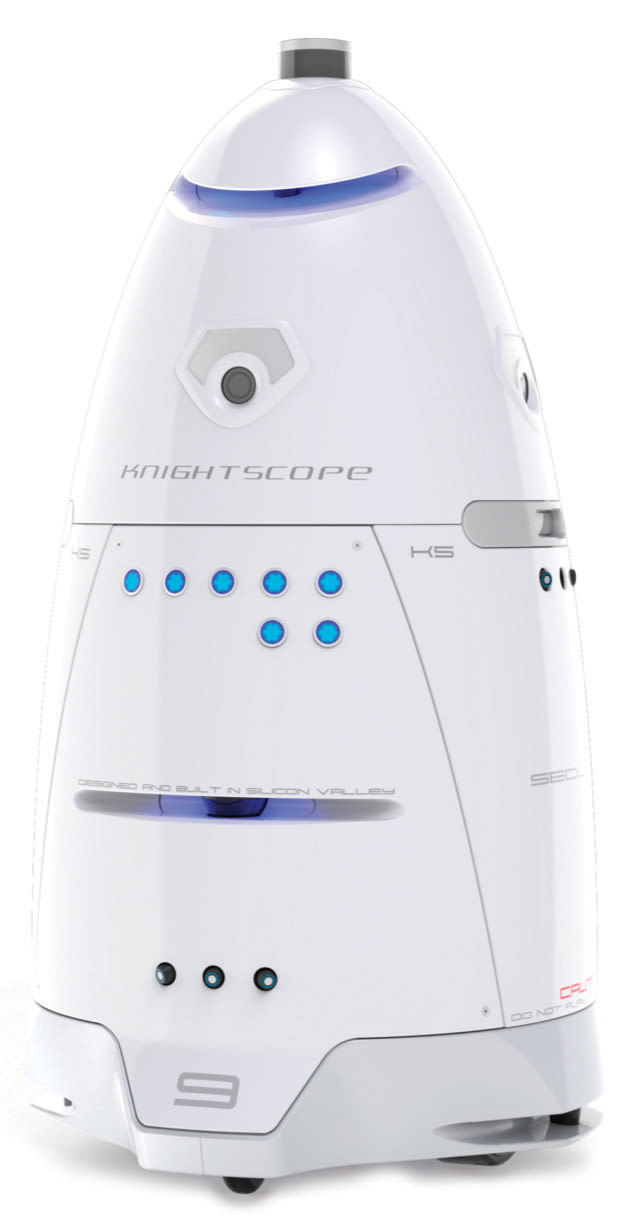Not a character from a dystopian action movie, I promise.
Robot security guards are coming to a Houston-area transit center, park and ride lot and rail station in the coming months, after the Metropolitan Transit Authority board approved a $270,000 test of the techno-police Thursday.
“They have been shown to be deterrents,” said Denise Wendler, chief information officer for Metro.
Wendler said Metro’s agreement with Knightscope is a one-year test, from which it could expand beyond the three locations. Citing the need to provide more security to petty crimes without stretching police resources, officials sought information on the robotic rangers.
Agency officials, in consultation with the company, will decide which parking lots, transit centers and rail stops get a robot in the first year, Wendler said.
Security sentinels are becoming a familiar sight in shopping malls and some developments. In downtown Houston, a robot patrols the grounds of Allen Center.
Though many users nationally have said they are a cost-effective crime deterrent, the devices have raised alarms with some privacy concerns about a robot roaming public spaces recording everything and broadcasting back to private and public entities. Fears of hacking also have been raised.
Metro officials are likely to use a K5 robot — a 400-pound, 5’2” bullet-shaped bot that moves at a maximum speed of 3 mph — at a transit center and park and ride lot. Though a sleek R2-D2 does not sound that intimidating, its ability to record video and relay it to police is its real threat to thieves and others.
“What they have seen is people move away from it because they do not want to be videoed,” Wendler said.
If you’re thinking you might have seen one of these things before, you may have. I don’t feel like digging through my archives for this, but there was a big discussion in Houston a bit more than a decade ago about the usefulness of installing a bunch of closed-circuit cameras downtown as a crime deterrent. That was eventually scrapped, partly for cost reasons, partly for privacy reasons, partly for a general lack of evidence that the cameras did serve as deterrents. It’s possible that data is different now – for sure, camera and surveillance technology is a lot more advanced, for better and worse – but even then the one good use case for the closed circuit cameras was in enclosed spaces – parking lots, subway trains, that sort of thing – and that’s more or less what is being proposed here. So we’ll see how they work. I do hope Metro is forthcoming with data about the experience, and I hope they will admit it and move on if they don’t have much effect.


I don’t see the value in these. They are pretty much just a rolling camera. These days surveillance cameras can be installed that are capable of monitoring a large area. Cameras mounted on high poles can capture an entire parking lot; inside cameras can be placed to cover an entire lobby or corridor. The robots also have an alert button, which is only useful if you are right next to the robot when you are attacked or have an emergency, and, these days most people have a phone at all times. Plus the robots where I work seem to break down and go out for maintenance quite often. Even if the repair service is included with the purchase, you’re still paying for a security device that will be out of use quite a bit.
We can’t keep red light cameras in place but we can hire robots to do the same thing, identify a crime being committed ?